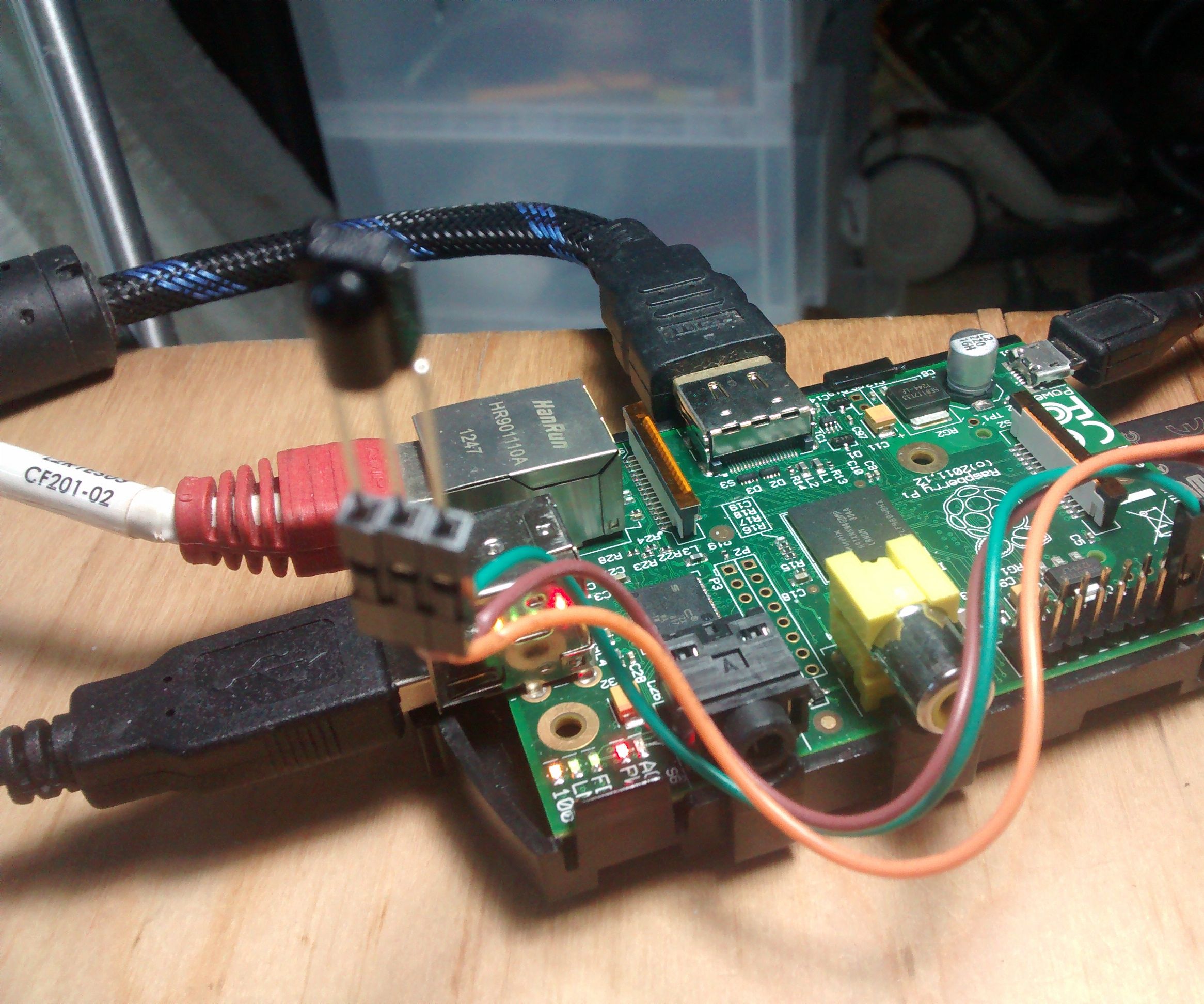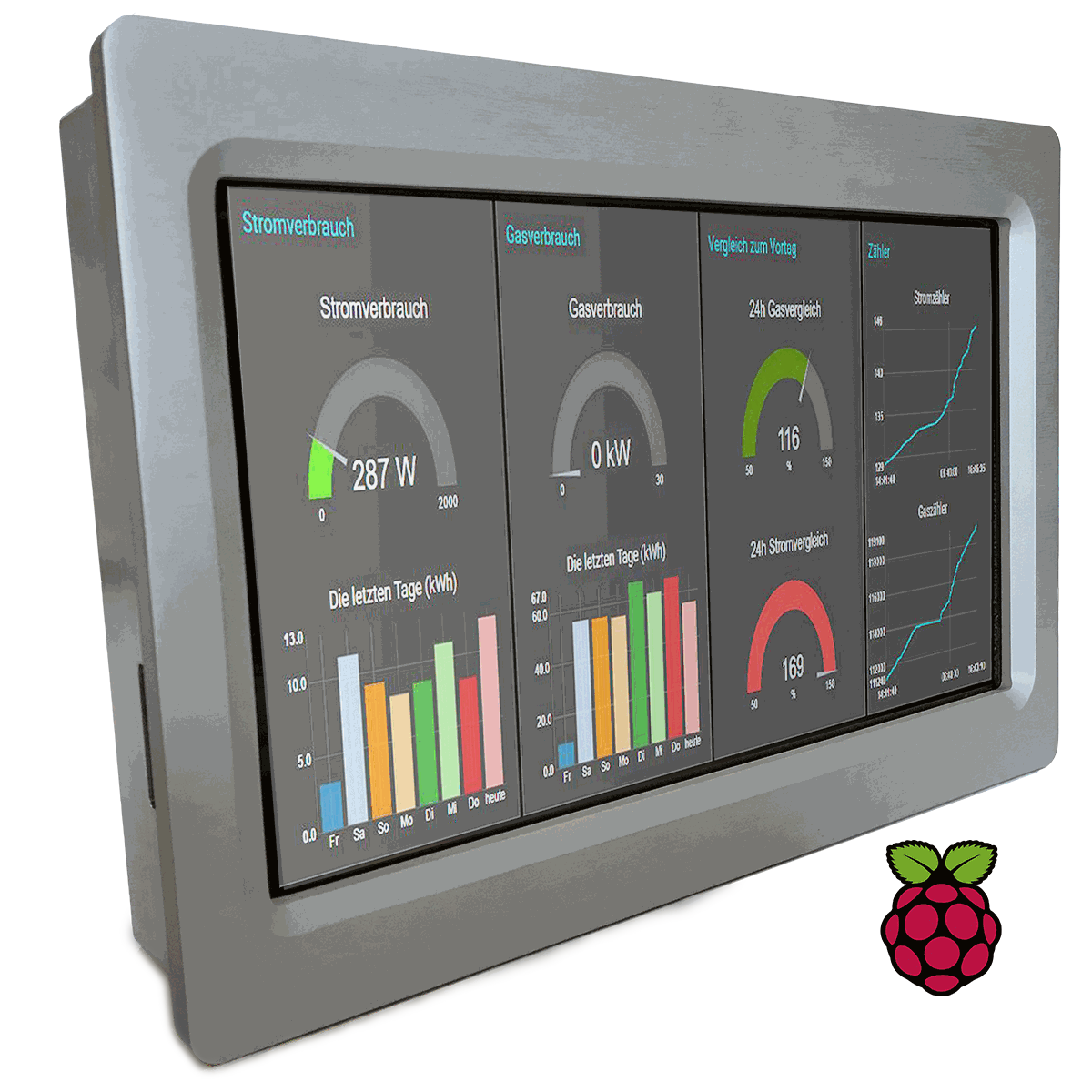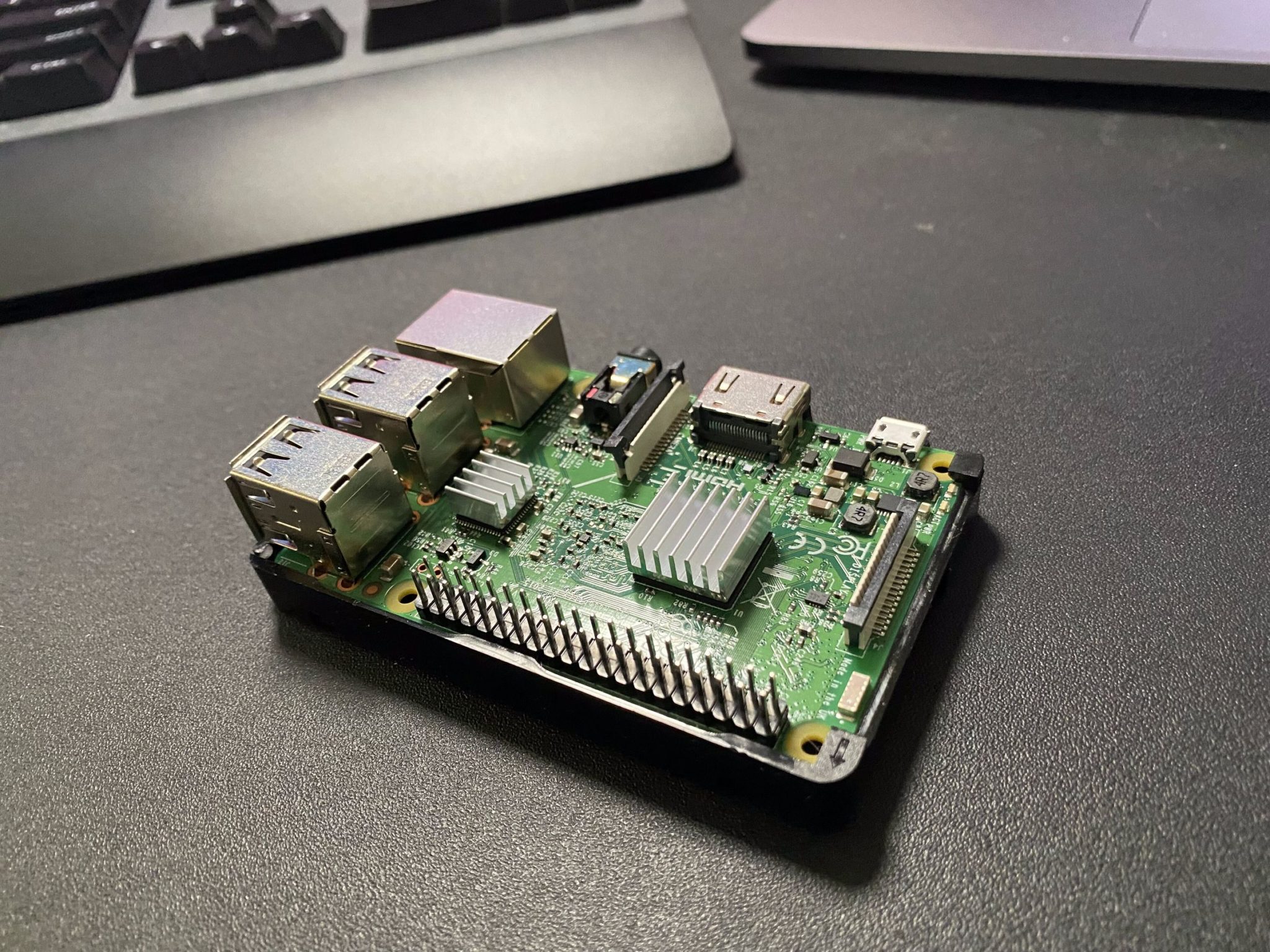Revolutionize Your Tech Game With Raspberry Pi System Monitor Remote Software
Picture this: you're chilling on your couch, sipping coffee, and suddenly you need to check what's going on with your Raspberry Pi. What if you could do that without even getting up? Enter Raspberry Pi system monitor remote software—a tech wizard's dream come true. This little gem lets you keep an eye on your beloved Raspberry Pi from anywhere, anytime. Whether you're a tech enthusiast, a hobbyist, or even a pro, this software is your new best friend.
So, why should you care about Raspberry Pi system monitor remote software? Well, it's not just about convenience—it's about efficiency, control, and peace of mind. Imagine being able to troubleshoot issues, check system performance, or manage resources from your phone or laptop. Sounds pretty sweet, right? This article dives deep into everything you need to know about this game-changing tech, so buckle up and let's get started.
Before we dive in, let me give you the lowdown. This isn't just another tech guide. We're going to break it down step by step, from the basics to advanced tricks. By the end of this, you'll be a pro at using Raspberry Pi system monitor remote software. Trust me, you don't wanna miss this!
- Senior Womens Hairstyles A Guide To Embracing Your Natural Beauty
- Beautiful Haircut Transform Your Look With These Stunning Styles
What Exactly is Raspberry Pi System Monitor Remote Software?
Let's get down to brass tacks. Raspberry Pi system monitor remote software is basically a tool that allows you to keep tabs on your Raspberry Pi from afar. Think of it like a remote control for your Pi, but way cooler. It gives you access to critical system information, such as CPU usage, memory, disk space, and network activity, all from the comfort of your favorite armchair.
But here's the kicker—it's not just about monitoring. This software also lets you manage processes, update software, and even reboot your Pi if things go south. It's like having a personal tech assistant that never sleeps. Whether you're running a home server, a media center, or just experimenting with cool projects, this tool is your secret weapon.
Why Should You Care?
Let's face it—Raspberry Pi projects can get complicated. Things break, processes crash, and sometimes you just need to know what's going on without physically being there. That's where Raspberry Pi system monitor remote software shines. Here's why you should care:
- Hairstyles Cuts The Ultimate Guide To Finding Your Perfect Look
- Older Women Hair Color Embrace Your Inner Glow With Stunning Shades
- Convenience: Check your Pi's status anytime, anywhere.
- Efficiency: Troubleshoot issues faster without manual intervention.
- Control: Manage resources and optimize performance on the fly.
- Peace of Mind: Know exactly what's happening with your Pi at all times.
And hey, who doesn't love feeling like a tech wizard? This software gives you that power.
Setting Up Your Raspberry Pi for Remote Monitoring
Alright, let's get our hands dirty. Setting up your Raspberry Pi for remote monitoring isn't as scary as it sounds. In fact, it's pretty straightforward once you know the ropes. Here's a step-by-step guide to get you started:
Step 1: Install the Right Software
First things first, you'll need to install the right software on your Raspberry Pi. There are tons of options out there, but some of the most popular ones include:
- Grafana: Perfect for visualizing data with customizable dashboards.
- Prometheus: Great for monitoring system metrics and alerts.
- Netdata: Super easy to set up and gives real-time insights.
For beginners, Netdata is a solid choice because it's user-friendly and doesn't require a PhD in computer science. Trust me, you'll be up and running in no time.
Step 2: Configure Your Network
Next up, you'll need to make sure your Raspberry Pi is properly connected to your network. This is crucial because, well, you can't monitor something if you can't connect to it. Make sure your Pi has a static IP address so you can always find it on your network.
Pro tip: Use SSH (Secure Shell) to remotely access your Pi. It's secure, reliable, and works like a charm.
Step 3: Set Up Remote Access
Now for the fun part—setting up remote access. There are several ways to do this, but one of the easiest is to use a tool like VNC (Virtual Network Computing). This lets you access your Pi's desktop from any device with an internet connection.
Alternatively, you can use a web-based interface if you're using software like Grafana or Netdata. This means you can check your Pi's status from any browser, anywhere in the world. How cool is that?
Popular Raspberry Pi System Monitor Remote Software Options
Not all system monitor software is created equal. Some are better suited for beginners, while others are more advanced. Here's a rundown of the top options:
Grafana
Grafana is like the Beyoncé of system monitoring tools. It's powerful, versatile, and absolutely stunning. With Grafana, you can create custom dashboards that display all your system metrics in one place. Plus, it integrates seamlessly with other tools like Prometheus and InfluxDB.
But let's be real—it's not for everyone. Setting it up can be a bit overwhelming if you're new to this whole thing. If you're up for the challenge, though, it's totally worth it.
Prometheus
Prometheus is another heavy hitter in the system monitoring world. It's designed for large-scale environments, so if you're running multiple Raspberry Pi projects, this could be your go-to tool. It's great for monitoring system metrics, setting up alerts, and even predicting future issues.
Like Grafana, Prometheus can be a bit complex for beginners. But once you get the hang of it, it's a game-changer.
Netdata
Netdata is the ultimate beginner-friendly option. It's super easy to install, requires minimal configuration, and gives you real-time insights into your Pi's performance. Plus, it has a sleek web-based interface that's a joy to use.
If you're just starting out, Netdata is the way to go. It's lightweight, fast, and gets the job done without all the hassle.
Benefits of Using Raspberry Pi System Monitor Remote Software
Now that you know what it is and how to set it up, let's talk about why you should use Raspberry Pi system monitor remote software. Here are just a few benefits:
- Real-Time Monitoring: Get instant updates on your Pi's performance.
- Proactive Maintenance: Catch issues before they become problems.
- Resource Optimization: Fine-tune your Pi's settings for maximum efficiency.
- Remote Access: Manage your Pi from anywhere in the world.
And let's not forget the coolest benefit of all—you'll feel like a tech wizard every time you use it. Who wouldn't want that?
Common Challenges and How to Overcome Them
Of course, no tech project is without its challenges. Here are some common issues you might face when using Raspberry Pi system monitor remote software, along with some tips to overcome them:
Challenge 1: Connectivity Issues
Problem: Your Pi won't connect to your network. Solution: Double-check your network settings and make sure your Pi has a static IP address. Also, ensure that your router isn't blocking incoming connections.
Challenge 2: Software Compatibility
Problem: The software you installed isn't working as expected. Solution: Make sure your Raspberry Pi OS is up to date and compatible with the software you're using. Sometimes, updating the software itself can fix the issue.
Challenge 3: Security Concerns
Problem: You're worried about unauthorized access to your Pi. Solution: Use strong passwords, enable two-factor authentication, and configure your firewall properly. Security is key, folks!
Best Practices for Using Raspberry Pi System Monitor Remote Software
To get the most out of your Raspberry Pi system monitor remote software, here are some best practices to keep in mind:
- Regular Updates: Keep your software and OS up to date to avoid security risks.
- Backup Regularly: Always back up your data in case something goes wrong.
- Monitor Consistently: Set up alerts to notify you of any issues before they escalate.
- Optimize Resources: Use the software to fine-tune your Pi's settings for peak performance.
By following these best practices, you'll ensure that your Raspberry Pi runs smoothly and efficiently.
Case Studies: Real-World Examples
Let's take a look at some real-world examples of how people are using Raspberry Pi system monitor remote software:
Example 1: Home Server Management
John runs a home server using his Raspberry Pi. With remote monitoring software, he can check the server's status from his phone while he's at work. This allows him to troubleshoot issues and ensure everything is running smoothly without having to physically be there.
Example 2: Media Center Optimization
Sarah uses her Raspberry Pi as a media center. With remote monitoring, she can optimize her Pi's resources to ensure smooth playback of her favorite movies and TV shows. Plus, she can update her media library from anywhere in the house.
Future Trends in Raspberry Pi Monitoring
As technology evolves, so does the world of Raspberry Pi monitoring. Here are some trends to watch out for:
- AI Integration: Expect to see more AI-powered tools that can predict and prevent issues before they happen.
- Cloud-Based Solutions: More and more tools will offer cloud-based monitoring for added convenience and scalability.
- IoT Compatibility: With the rise of IoT devices, expect monitoring tools to become more integrated with other smart devices in your home.
Exciting times ahead, folks!
Conclusion
So there you have it—everything you need to know about Raspberry Pi system monitor remote software. From setting it up to best practices and real-world examples, we've covered it all. This powerful tool is a must-have for anyone serious about their Raspberry Pi projects.
Now it's your turn to take action. Whether you're just starting out or you're a seasoned pro, this software can help you take your tech game to the next level. So what are you waiting for? Get out there and start monitoring!
And don't forget to leave a comment below with your thoughts, questions, or tips. Sharing is caring, after all. Oh, and if you liked this article, be sure to check out our other guides for even more tech wizardry. Happy monitoring!
Table of Contents
- What Exactly is Raspberry Pi System Monitor Remote Software?
- Why Should You Care?
- Setting Up Your Raspberry Pi for Remote Monitoring
- Popular Raspberry Pi System Monitor Remote Software Options
- Benefits of Using Raspberry Pi System Monitor Remote Software
- Common Challenges and How to Overcome Them
- Best Practices for Using Raspberry Pi System Monitor Remote Software
- Case Studies: Real-World Examples
- Future Trends in Raspberry Pi Monitoring
- Conclusion
- Why Hairstyles No Fringe Are Trending In 2023 A Fresh Look For Everyone
- Side Part Medium Length Hair The Ultimate Guide To Nailing Your Look

Raspberry pi system monitor remote indiarety

Raspberry pi pc system monitor miloeazy

Raspberry Pi Remote Network Monitor A Comprehensive Guide ACCDIS